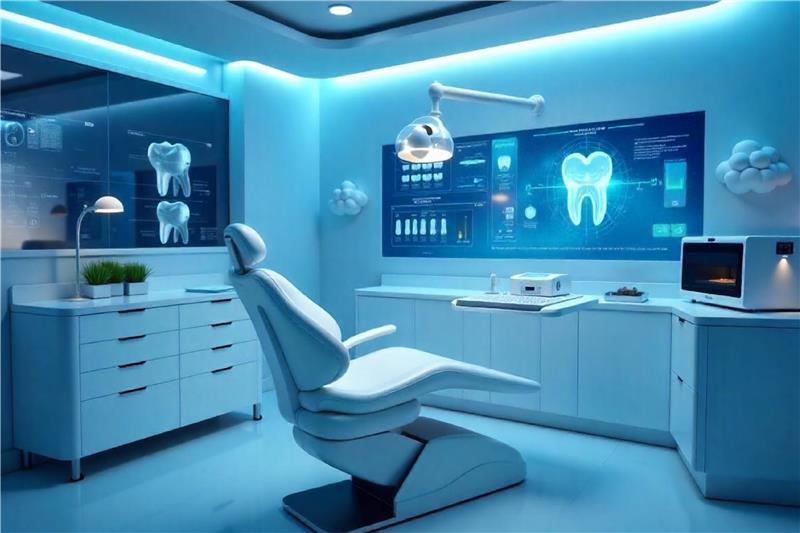Dental anxiety is one of the most common challenges faced by both patients and dental professionals. According to the National Library of Medicine, 36% of individuals experience dental anxiety, while 12% have extreme fear of visiting the dentist. This fear often leads to delayed treatments, poor oral health, and negative patient experiences.
For dentists, addressing these anxieties is not only essential for ensuring timely oral health care but also for building trust, improving patient satisfaction, and fostering long-term relationships.
This blog explores the root causes of dental anxiety and provides actionable strategies to help dental professionals manage and reduce patient fear, ultimately creating a more comfortable and supportive experience.
Why Managing Dental Anxiety Matters
Dental anxiety isn’t just about fear—it has a direct impact on patient health and dental practice efficiency. Some of the major challenges associated with anxious patients include:
✔ Avoidance of Treatment – Patients with severe anxiety often skip appointments, leading to serious oral health complications that require more extensive (and costly) treatments later.
✔ Communication Barriers – Anxious patients may struggle to express concerns, provide accurate medical histories, or fully understand their treatment plans.
✔ Longer Chair Time – Dentists may need to spend extra time reassuring patients, which can slow down workflows and impact appointment scheduling.
Understanding why patients feel anxious is the first step toward creating a stress-free environment in dental care.
Root Causes of Dental Anxiety
To effectively manage dental anxiety, dentists must identify its primary triggers. Common causes include:
✔ Fear of Pain – Many patients associate dentistry with pain, especially those who have had uncomfortable experiences in the past.
✔ Loss of Control – Being in the dental chair can make patients feel vulnerable and helpless, triggering anxiety.
✔ Negative Past Experiences – A previous encounter with an insensitive dentist or a traumatic procedure can lead to long-term fear.
✔ Sensory Triggers – The sound of dental drills, bright lights, and clinical smells can evoke stress.
✔ Social Influence – Many patients develop anxiety based on stories from family or friends, even if they haven’t personally had a bad experience.
By recognizing these triggers, dental professionals can proactively address patient concerns and create a more comfortable and reassuring experience.
6 Strategies to Help Patients Overcome Dental Anxiety
Here are proven techniques that dentists, clinics, and locum tenens professionals can implement to ease patient fears and create a more positive dental experience.
1. Build Trust Through Clear Communication
Transparent communication is one of the most effective ways to reduce patient anxiety.
✔ Explain Procedures in Simple Terms – Walk patients through each step of the procedure before starting.
✔ Encourage Open Dialogue – Allow patients to express their fears and ask questions.
✔ Maintain Transparency – If discomfort is possible, be honest but also reassure them about pain management techniques.
💡 Example: Instead of saying, “This might hurt,” say, “You might feel slight pressure, but we will ensure you’re comfortable throughout.”
2. Create a Calming Dental Environment
The design and ambience of a dental office can significantly influence a patient’s comfort level. Simple changes can make a big difference in reducing anxiety.
✔ Soothing Colors & Soft Lighting – Replace stark white walls with warmer tones and natural lighting.
✔ Minimized Noise – Use white noise machines or soft background music to drown out dental equipment sounds.
✔ Aromatherapy – Scents like lavender or chamomile have been shown to reduce stress in medical environments.
💡 Pro Tip: Offering weighted blankets or stress balls in the waiting area can also help anxious patients relax before their appointment.
3. Offer Anxiety-Reducing Tools
Several in-office techniques can help patients stay calm and more comfortable during their visit.
✔ Sedation Dentistry – Options like nitrous oxide (laughing gas), oral sedatives, or IV sedation can significantly ease anxiety.
✔ Distraction Methods – Offer TV screens, music, or noise-canceling headphones to shift patient focus.
✔ Guided Relaxation Techniques – Encourage deep breathing exercises or simple meditation techniques before and during treatment.
💡 Example: Some clinics allow patients to hold a mirror during the procedure, so they feel more in control and less anxious.
4. Utilize Technology to Enhance Patient Comfort
Modern dental technologies not only improve treatment efficiency but also help reduce pain and fear triggers for patients.
✔ Needle-Free Anesthesia – Computer-controlled anesthesia systems eliminate the fear of large syringes.
✔ Laser Dentistry – Minimizes bleeding, pain, and the need for sutures in many procedures.
✔ AI-Assisted Dental Procedures – Improves diagnostic accuracy and reduces appointment time, making visits quicker and less stressful.
💡 Pro Tip: Clinics that promote their use of modern, pain-free technology often see a higher number of anxiety-prone patients booking appointments.
5. Build Strong Patient Relationships
Trust takes time, but consistent, personalized care can turn even the most anxious patient into a loyal client.
✔ Remember Patient Preferences – Keep track of specific concerns and tailor the approach to each individual.
✔ Offer Flexible Scheduling – Allow anxious patients to book appointments at quieter times.
✔ Train the Entire Dental Team – Ensure front-desk staff, hygienists, and assistants are all trained to handle anxious patients with empathy and patience.
💡 Example: A simple gesture like remembering a patient’s preferred music choice or offering a stress ball can make them feel more at ease.
6. Provide Online Resources & Support
Digital engagement can help calm patient fears before they even step into the clinic.
✔ Educational Content – Add a blog section on your website covering topics like “How to Overcome Dental Anxiety”.
✔ Interactive Q&A Tools – Use chatbots to answer patient concerns in real time.
✔ Patient Testimonials – Highlight stories of previously anxious patients who had positive experiences.
💡 Example: A short patient video testimonial about overcoming dental anxiety can boost confidence and increase appointment bookings.
The Role of Locum Tenens Dentists in Managing Dental Anxiety
Locum tenens dentists play a crucial role in helping anxious patients feel comfortable—especially when transitioning between different clinics. Their fresh perspectives and adaptability allow them to introduce new anxiety-reduction techniques to dental teams.
By building quick rapport with patients and adapting to different office cultures, locum tenens professionals ensure a smooth, reassuring experience for both patients and staff.
Moving Beyond Anxiety to Build Long-Term Patient Trust
Dental anxiety doesn’t have to be a barrier to good oral health. By implementing empathy-driven strategies, leveraging technology, and fostering a calming environment, dentists can turn fearful patients into lifelong advocates for their practice.
For dentists looking to expand their careers or take on a locum tenens role, Link Health Staff connects professionals with high-quality job opportunities across the U.S.
🔗 Find Dentist Jobs Today
💡 Whether you’re looking for temporary or permanent roles, we help you make a difference in patient care—one confident smile at a time!






